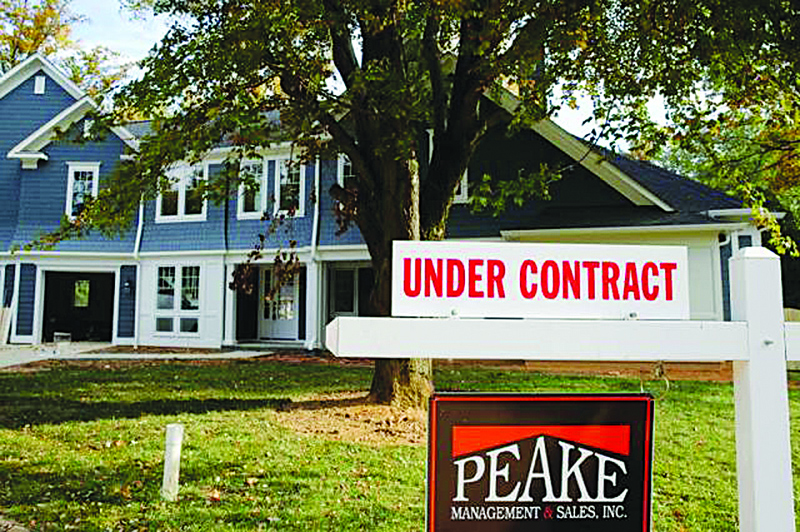 WASHINGTON: Sales of new homes rose faster than analysts expected last month in the United States, according to government data released Friday.
WASHINGTON: Sales of new homes rose faster than analysts expected last month in the United States, according to government data released Friday.WASHINGTON: Sales of new homes rose faster than analysts expected last month in the United States, according to government data released Friday, though prices remained high and supply was still tight. The Commerce Department reported sales rose 1.5 percent from July's upwardly revised rate to a seasonally adjusted pace of 740,000, annualized, its second consecutive monthly increase.
The housing sector has been a popular place despite the overall economic downturn caused by the COVID-19 pandemic, as cheap mortgage rates and the disruptions caused by the virus spurred people to shop for homes. Ian Shepherdson of Pantheon Macroeconomics said the two months of gains indicate the fast-spreading Delta variant of the virus could again be pushing people into the market.
"We think the upturn in mortgage demand has been triggered by the Delta COVID wave, in an echo of the surge in demand for suburban homes following the initial COVID shock," he wrote in an analysis. "The increase in demand this time will be much smaller, and we expect it to flatten again later in the fall as Delta fear recedes." The trend over the past year and a half caused a tightening of supply and concurrent increase in prices, which the data said improved little last month. Supply in August was at a seasonally adjusted 6.1-month pace at the current rate of sales, a notch higher than in July. Median home prices remained unchanged from that month at $390,900, but well above the $325,500 median in August 2020.
US jobless claims rise again amid Delta, hurricane
New applications for US unemployment benefits rose for the second straight week last week, according to government data Thursday, as the economy grapples with the Delta variant of COVID-19 that has made businesses skittish again. Initial claims for jobless aid rose just 16,000 in the week ended September 18, to 351,000, seasonally adjusted, the Labor Department reported, which was above analysts' expectations. After spiking into the millions as the pandemic began in March 2020, the closely watched metric of labor market health has been on a downward trend for most of this year, but the recent uptick takes it back to its level of about a month ago.
Rather than a sign of the Delta variant's disruptions, Ian Shepherdson of Pantheon Macroeconomic said last week's increase was more likely a consequence of seasonal adjustments in the data and the impact of Hurricane Ida which caused a backlog at state unemployment offices. "The trend in claims likely will continues to fall, slowly, but the seasonals likely will prevent new lows until November," he wrote in an analysis.
The report also showed another 15,162 new claims, without seasonal adjustment, submitted under the Pandemic Unemployment Assistance (PUA) program, likely backlogged applications for the emergency aid for freelance workers, which expired two weeks ago. All told, nearly 11.3 million people were receiving aid under all government programs as of the week ended September 4. That was the last week when the PUA and the Pandemic Emergency Unemployment Compensation program for the long-term jobless were available. At the time there were 4.9 million and 3.6 million people on the programs, respectively. - AFP









